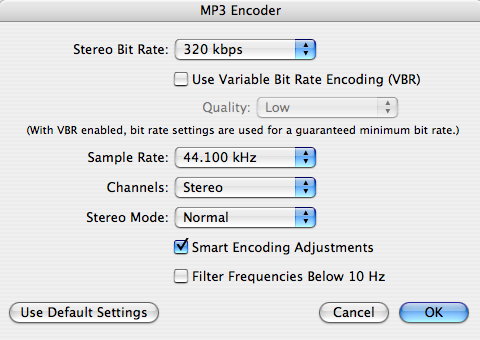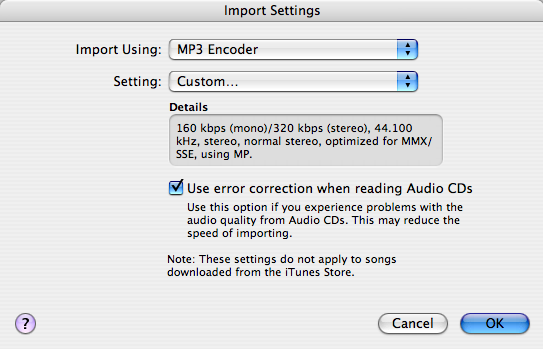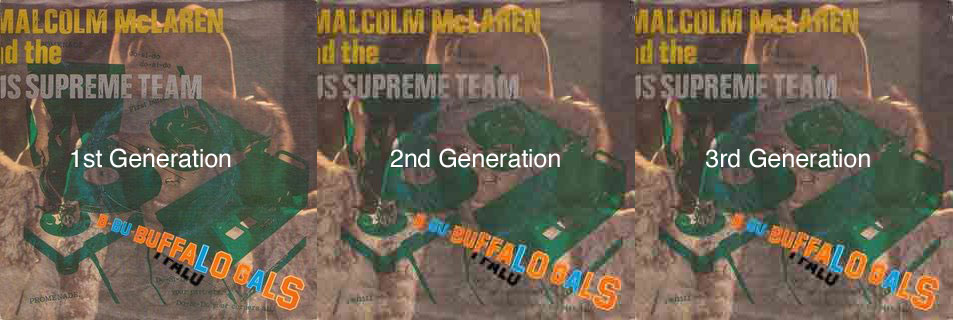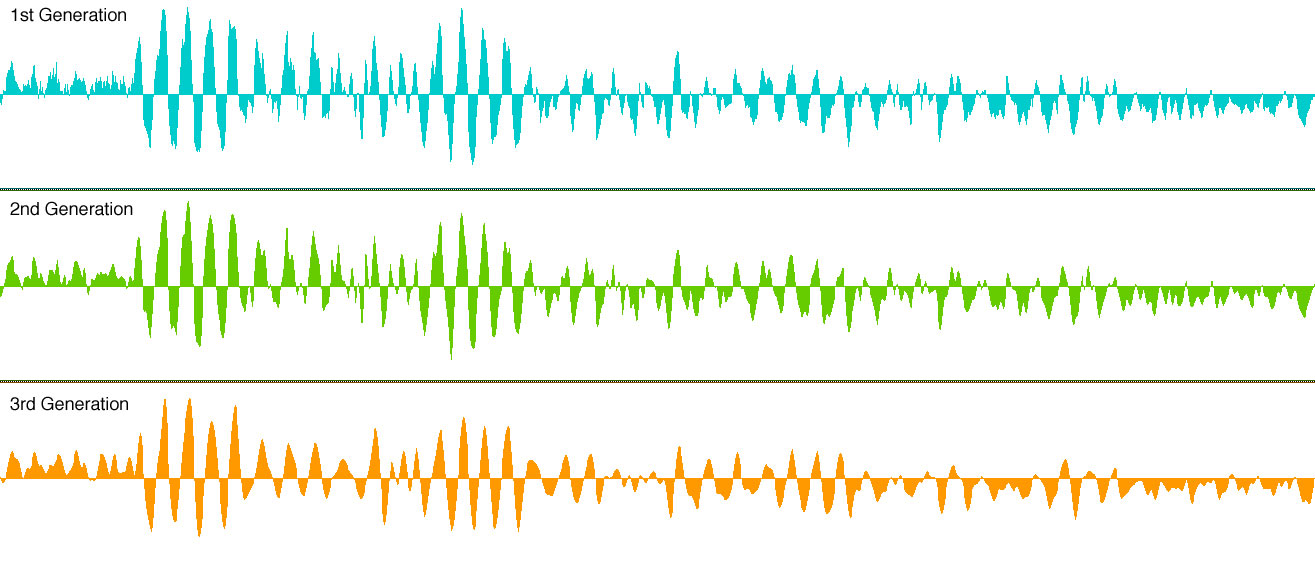…these guidelines will ensure that you don’t populate the web with awful sounding files.
- Don’t use ‘Joint Stereo’. This saves marginally on file space by allowing the left and right channels to share information as necessary, which results in warbling treble.
- Don’t use ‘Variable Bit Rate (VBR)’. This allows the file quality to lower when there’s less complexity in the music, and again you can hear the treble change as the file quality shifts fluidly like this. Always use Constant Bit Rate (CBR).
- The Sample Rate needs to be 44.1, like a CD. Lower it and lose quality fast.
- The only thing you should play with if you want to create smaller files is the Bit Rate, and don’t go below 128. 320 is very close to CD quality, and since most of us have high speed access now we should always be using it.
- Do not make an mp3 of an mp3, or an mp3 of a CD that was burned from mp3s. This makes worse and worse sounding files (see below for why).
These guidelines go for whatever program you use for your mp3s. But to set this up in iTunes, open Preferences/Settings and click on the ‘Import Settings’ button. Where it says ‘Import Using:’ select the ‘MP3 Encoder’. Beside ‘Setting’ select ‘Custom…’
Then set things up this way:

In iTunes you do not want to check ‘Filter Frequencies Below 10 Hz’ because although we can’t hear bass that low, its absence does affect the impact of the sound we do hear. Check ‘Smart Encoding Adjustments’ though. Might as well be smart.
On another note…media files come in two types: ‘lossless’ (large files that capture all of the information (used for large-format print applications, store-bought CDs and DVDs) and ‘lossy’ (smaller files that approximate the sound or image, but are easier to share on the net).
So if you’re a graphic designer and you need high quality image files to print posters from, you use TIFF or EPS files…but if you’re designing for the web you use jpg or gif files. They’re not as visually clear, but on a small web page they look fine. What you don’t want to do is make a jpg of a jpg because the image will gradually degrade.
In audio, if you want to retain all of the information perfectly you use WAV, AIF or SD2 files (the highest quality file you can get from a standard CD is a 44.1 kHz stereo WAV/AIF file). But ever since file sharing began on the net, we’ve relied increasingly upon mp3, and mp4/AAC files.
If you make an mp3 from a CD or WAV file with the settings described above, you’re getting something that is virtually indistinguishable from the original CD. But if you open that mp3 file to make changes to it (like edit the beginning and end of it) and then you save it again, you’re making an mp3 of an mp3…and that’s akin to repeatedly making a jpg of a jpg, losing information each time. Here’s what you get if you keep making lossy files of lossy files:
Below is what the sound wave looks like for the three passages you just heard…details in the wave get lost with each generation:
It’s especially important to be vigilant about this issue if you’re a producer who’s sampling off of mp3s to make your beats. Realize that when you’re done mixing your CD-quality WAV file, the first thing that’s going to happen is someone is going to make an mp3 of it. And then some of the elements in your track are going to lose impact because the source files were already mp3s.



